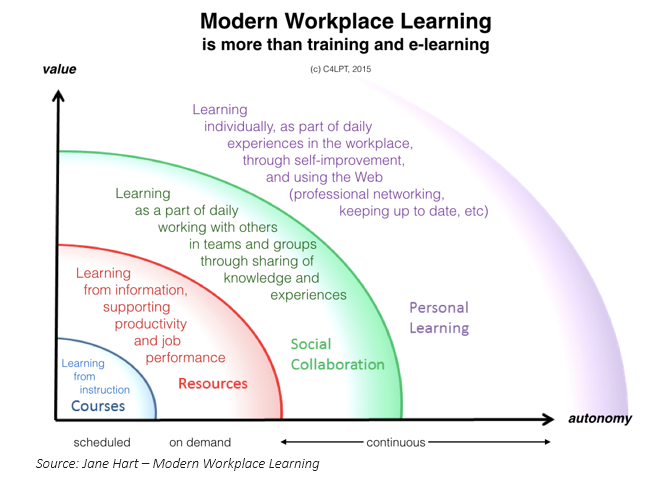Volunteering New Zealand Board Member James Lord shares four ways to make training work for your organisation, so that you can achieve a workforce that demonstrates their capability and competencies in a real way, on the job.
Like many sectors over the past decade, I have seen organisations that utilise volunteers have their training budgets take a hit when funding becomes more and more stretched. Given training can be perceived as an expensive “nice to have” it is not surprising that it is often one of the first budget lines to be critiqued.
Purchasing training that is as efficient and as effective as possible not only makes good business sense, but can also mean that staff are not subjected to training courses that fill very little need outside of a compliance, tick-the-box approach to professional development.
Four ways to make training work for you
The following are four ways to make your training budget go further and achieve a workforce that demonstrates their capability and competencies in a very real way, and on the job.
Only purchase physical training that’s needed to meet a capability gap
Historically, organisations are sold the idea that the solution to a risk or a compliance issue is to undertake training. This misses the point that staff, including volunteers, are not empty vessels but often bring a history of experience, skills and knowledge that should not be excluded.
Taking a “sheep-dipping” approach to professional development i.e. getting all staff to undertake the same training regardless of their existing skills and knowledge,e is an extremely quick way of burning through an organisations often limited professional development budget.
Providing training in only those areas where there is an identifiable skills or knowledge gap, particularly where the topic is new or abstract, is an efficient and cost-effective way to use a limited training budget.
One way to identify these gaps is to utilise tools such as Volunteering New Zealand’s InvolveMe systems. Based on the internationally regarded Best Practice Guidelines and evaluated against the latest thought leadership on high impact volunteer engagement, the tool provides a snapshot on potential areas for capability development. InvolveMe can be used to target your professional development priorities to ensure you’re getting the most out of the resources that you commit.
70/20/10 – learning informally or experientially
Research tells us that the way people prefer to learn at work is changing. 70% of learning takes place informally or experientially as people go about their work individually or working together, with 20% from physical resources and 10% from courses.
Rated most important in a workplace learning research survey was:
- Knowledge sharing in teams
- General conversations and meetings
- Learning from buddies/mentors
- Web searching
- Personal and professional networks and communities

Life-long, continuous learning outlines that there should be a focus on social collaboration and personal learning.
Social collaboration includes ensuring that the workforce can collaborate with their peers to share their knowledge and expertise, as well as recognising the importance of self-directed knowledge acquisition. Personal learning recognises that individuals are naturally inquisitive in topics that they have an interest in, for example keeping up to date with contemporary management and leadership techniques is extremely effective. The upcoming action learning groups and Chief Executive forums are both examples of environments that allow social collaboration to occur.
Conveniently, these two approaches have the lowest direct costs to an organisation. The key is to provide the enabling environment and culture to allow this form of continuous learning to occur.
Applying that knowledge on the job
That’s all very well I hear you sigh, but how do you know if someone has done anything if you leave people to learn autonomously? A fair point, however perhaps the wrong question, so let’s look at it another way.
There’s no denying that there is a certain simplicity in being able to say that you have provided a training course on a subject and ticking off that each staff member that has attended. From a compliance perspective this certainly meets a need. But does sitting in a classroom tell you whether a trainee is able to take that knowledge and apply it? If not, that’s a pretty low return on your investment of not only the course cost but the opportunity cost of having staff off-site.
So, the better question is – how do I know if someone is able to do the job I need them to do? This is where robust workplace assessment can help.
Using naturally occurring evidence, including observations of behaviour and conversations, demonstrates that there has been a transfer of learning into practice.
The Certificate in Managing Volunteers provides an example of this in action. Trainees learn autonomously, largely utilising their peers and other forms of self-improvement. Importantly, they also use the New Zealand Competencies for Managers of Volunteers as a resource to guide them in the type of learning they should be seeking. Volunteering New Zealand has arranged for several workplace assessors to be trained through Careerforce (the Industry Training Organisation (ITO) for the health and wellbeing sectors). These assessors use workplace assessments which lead to achieving the New Zealand Certificate in Business (First Line Management) Level 4.
Workplace assessments also consider the context and kaupapa of the organisation that the trainee works for, particularly important in strong values-based organisations that volunteers tend to gravitate towards.
Use an adaptable, flexible approach to training
One of the biggest frustrations I hear from organisations is the struggle and drama of organising the logistics of arranging workshops as well as ensuring staff attend and are back-filled while they are away from the frontline.
While there is no getting away from this when a workshop type training session is your only option, utilising the workplace learning approaches outlined above will go some way to creating a flexible and responsive approach to training.
Trainees that achieve a nationally recognised qualification can also enable organisations to benchmark their workforce against other sectors while increasing their own career mobility.
Getting started: make training work for you
Professional development is not a “nice-to-have”, it’s an essential tool in ensuring that an organisation is able to maintain a level of flexibility to not only respond to immediate needs, but to create the insights and responses to trends that are not yet obvious.
Using a professional development framework which targets the skills that you needed and can be delivered the way in which people prefer to learn and can be applied on the job goes a long way to getting the most out of your training budget.
What professional development approaches work for you and your organisation? I would love to hear how your organisation supports professional development of its managers and staff.
 About the Author: James Lord is a member of the Volunteering New Zealand Board and is also a Business Development Consultant at Careerforce. Download Jame’s full article: Four ways to make training work for you!
About the Author: James Lord is a member of the Volunteering New Zealand Board and is also a Business Development Consultant at Careerforce. Download Jame’s full article: Four ways to make training work for you!




About The Author: Michelle Kitney
Chief Executive, Volunteering New Zealand
More posts by Michelle Kitney